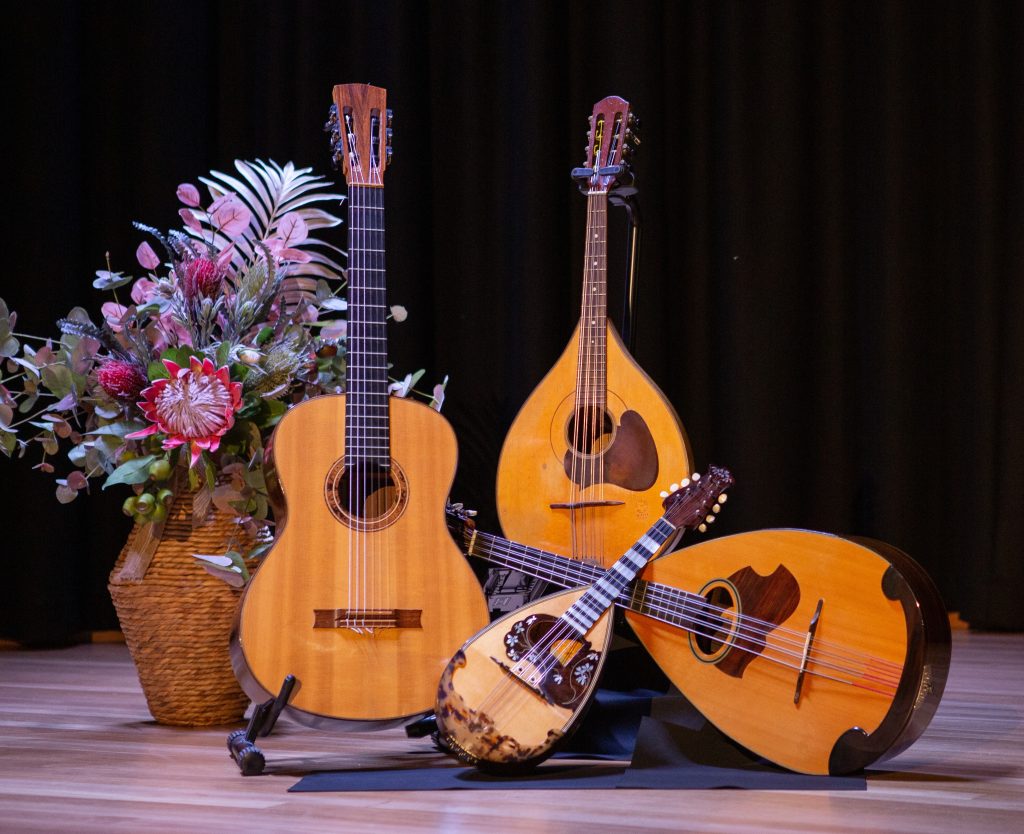The Instruments

The orchestra consists of mandolins, mandolas, guitars and bass, and is often joined by soloists on flute and clarinet at concerts.
The mandolins provide the higher range of notes (tuned like violins). The mandolins are split into two sections: mandolin 1 – usually plays the melody and higher, more difficult notes, and mandolin 2 – often plays harmonies but also get melodic lines. Together the mandolins mirror the violin section of a traditional string orchestra.
The mandolas are tuned an octave below the mandolins and mirror the role of violas and cellos from string ensembles. They provide a fullness to the sound by supporting the mandolin melodies with lower harmonies. They will often be featured within pieces, playing variations on the melody or new melodic lines, as they provide a different, more mellow tone than the mandolins.
The guitars provide rhythm, harmony and colour to the orchestra. Strumming full chords can give the music a bold Spanish sound, and gently picked arpeggios can provide backing to a soft ballad. The guitars have no parallel in a traditional string orchestra but play an important role in the mandolin orchestra as they fill out the middle and lower registers of the ensemble.
The bass provides the foundation of the sound, as the biggest and lowest tuned instrument. Traditionally mandobases were used but as they are now very rare and also difficult to play, the double bass takes the role. Alternating between bowing and pizzicato, the double bass fills out the lower registers and sets the rhythm and tempo for the orchestra.
SMO is often joined by soloists on clarinet and flute which perform concertos by Vivaldi and Mozart. Wind instruments pair well with the mandolin orchestra as their sustained notes blend well with the plucked instruments. Often the orchestra will provide backing rhythms and harmony while the soloist performs the melody.
